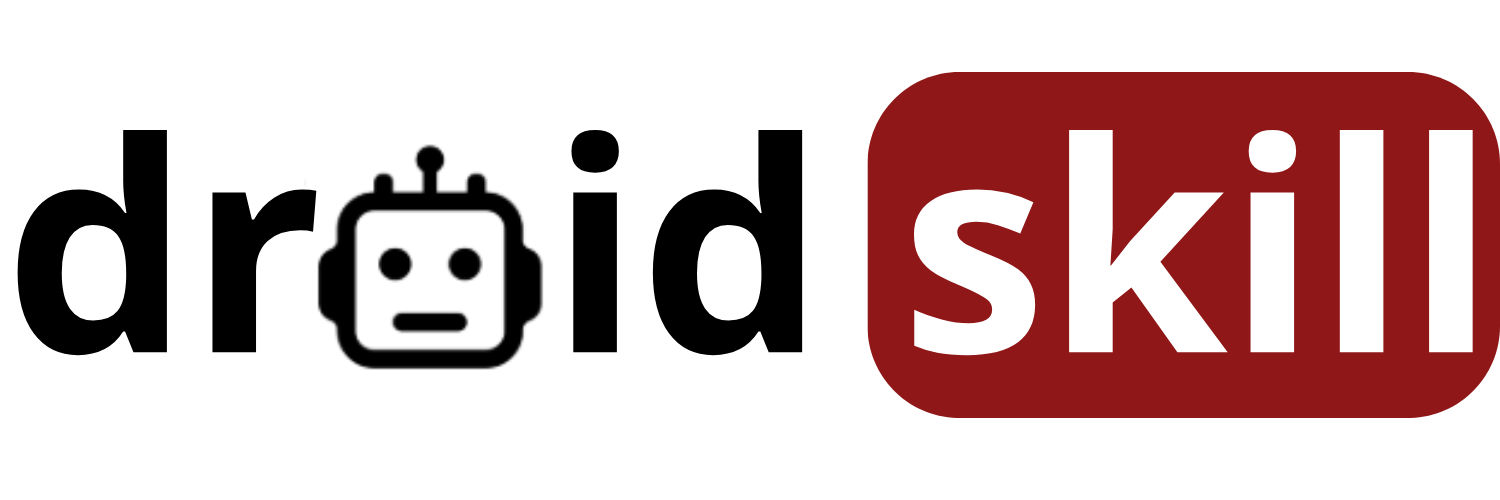Hey Android enthusiasts! Ever felt the frustration of losing your precious contacts after switching phones or accidentally deleting them? Fear not! In this comprehensive guide, we'll dive deep into the world of contact syncing on Android, ensuring your connections are always safe and readily available. We'll explore various methods, troubleshoot common issues, and provide tips to optimize your contact management. Let's get started!
Why Sync Your Contacts?
Before we delve into the how, let's understand the why. Syncing your contacts offers several key advantages:
- Data Backup: A synced copy of your contacts acts as a safety net. If your phone is lost, stolen, or damaged, your contacts remain safe and accessible.
- Seamless Transition: When you upgrade to a new Android device, syncing allows you to effortlessly transfer all your contacts without manual entry.
- Accessibility Across Devices: Access your contacts from any device connected to your synced account, be it your phone, tablet, or computer.
- Collaboration: Some syncing services allow you to share contact lists with family members, colleagues, or teams, facilitating collaboration.
Methods for Syncing Contacts on Android
Android offers multiple avenues for syncing your contacts. Let's explore the most popular and effective methods:
1. Google Account Sync
Google Account Sync is the most common and arguably the easiest way to keep your contacts synchronized. Most Android devices are inherently linked to a Google account, making this method seamless.
How to Enable Google Account Sync:
- Go to your phone's Settings app.
- Scroll down and tap on Accounts or Accounts and Sync (the exact wording may vary depending on your Android version).
- Select your Google account.
- Ensure that the Contacts option is toggled on. If it's off, tap the toggle to enable it.
- You might see a Sync Now option. Tap it to initiate an immediate sync.
Understanding Google Contacts:
When you sync your contacts with your Google account, they are stored in Google Contacts. You can access and manage your contacts through the Google Contacts website (contacts.google.com) or the Google Contacts app on your Android device.
Managing Duplicate Contacts:
Sometimes, syncing can lead to duplicate contacts. Google Contacts offers a feature to merge duplicates. On the Google Contacts website, look for a Merge & Fix or Duplicates option in the left-hand menu. The app will identify potential duplicates and allow you to merge them.
Google Contacts is a powerful and user-friendly contact management system integrated directly into your Android experience. It offers seamless syncing, duplicate management, and accessibility across devices. By leveraging Google Contacts, you can ensure your contacts are always safe, organized, and readily available.
Download Google Contacts from Play StoreSearch Google Contacts on Play Store2. Samsung Cloud Sync (for Samsung Devices)
If you own a Samsung device, you have access to Samsung Cloud, which offers a dedicated contact syncing feature. This is particularly useful if you prefer to keep your data within the Samsung ecosystem.
How to Enable Samsung Cloud Sync:
- Go to your phone's Settings app.
- Tap on Accounts and backup.
- Select Samsung Cloud.
- Tap on Contacts.
- Ensure that the sync option is enabled. You can also choose to sync over Wi-Fi only to conserve mobile data.
Restoring Contacts from Samsung Cloud:
If you need to restore your contacts from Samsung Cloud, follow these steps:
- Go to your phone's Settings app.
- Tap on Accounts and backup.
- Select Samsung Cloud.
- Tap on Restore data.
- Choose Contacts and tap Restore.
Samsung Contacts App:
Samsung devices come with a pre-installed Contacts app that integrates seamlessly with Samsung Cloud. This app allows you to manage your contacts, create groups, and perform other contact-related tasks.
Samsung Cloud offers a convenient and reliable way to sync your contacts if you're a Samsung device user. Its seamless integration with Samsung devices and the dedicated Samsung Contacts app make it a user-friendly option for managing your contacts within the Samsung ecosystem. Remember to regularly back up your data to ensure your contacts are always safe and recoverable.
Download Samsung Contacts from Play Store (usually pre-installed)Search Samsung Contacts on Play Store3. Third-Party Contact Sync Apps
While Google Account Sync and Samsung Cloud are popular choices, several third-party apps offer alternative contact syncing solutions. These apps often provide additional features, such as advanced duplicate management, contact enrichment, and cross-platform compatibility.
Popular Third-Party Contact Sync Apps:
Here are a few well-regarded third-party contact sync apps:
1. Contacts Sync for Google Gmail
This app focuses specifically on syncing contacts with Google Gmail. It offers advanced features like two-way sync, automatic conflict resolution, and support for multiple Google accounts.
Contacts Sync for Google Gmail is a robust solution for users who heavily rely on Google Gmail for contact management. Its advanced features, such as two-way sync and automatic conflict resolution, ensure your contacts are always up-to-date and accurate across all your devices. The support for multiple Google accounts makes it ideal for users with personal and professional accounts.
Search Contacts Sync for Google Gmail on Play Store2. Contact Optimizer
Contact Optimizer goes beyond simple syncing. It helps you clean up your contacts by identifying and merging duplicates, removing incomplete entries, and adding missing information.
Contact Optimizer is a comprehensive tool for maintaining a clean and organized contact list. Its features for identifying and merging duplicates, removing incomplete entries, and adding missing information ensure your contacts are accurate and up-to-date. This app is particularly useful for users who have accumulated a large and disorganized contact list over time.
Search Contact Optimizer on Play Store3. MCBackup - My Contacts Backup
MCBackup offers a simple and straightforward way to back up your contacts to your email or computer. While it doesn't offer continuous syncing, it's a great option for creating manual backups.
MCBackup provides a simple and reliable way to create manual backups of your contacts. While it doesn't offer continuous syncing, it's a valuable tool for creating periodic backups to ensure your contacts are safe. The ability to back up to your email or computer provides flexibility and control over your data.
Search MCBackup - My Contacts Backup on Play StoreChoosing the Right Third-Party App:
When selecting a third-party contact sync app, consider the following factors:
- Features: Does the app offer the features you need, such as duplicate management, contact enrichment, or cross-platform compatibility?
- Security: Is the app reputable and does it prioritize your privacy and data security?
- User Reviews: What do other users say about the app's performance and reliability?
- Pricing: Is the app free or paid? If paid, does it offer a free trial?
Troubleshooting Common Contact Sync Issues
Even with the best syncing methods, you might encounter occasional issues. Here are some common problems and their solutions:
1. Contacts Not Syncing
Solution:
- Check your internet connection: Ensure you have a stable Wi-Fi or mobile data connection.
- Verify account sync settings: Double-check that contact syncing is enabled for your Google account or Samsung Cloud account.
- Force sync: Manually initiate a sync by going to your account settings and tapping Sync Now.
- Clear cache and data: In your phone's settings, find the Contacts app and clear its cache and data. This will force the app to re-sync your contacts.
- Restart your device: A simple restart can often resolve minor syncing issues.
2. Duplicate Contacts
Solution:
- Use Google Contacts' Merge & Fix feature: As mentioned earlier, Google Contacts can identify and merge duplicate contacts.
- Use a third-party contact management app: Apps like Contact Optimizer offer advanced duplicate management features.
- Manually merge contacts: If you only have a few duplicates, you can manually merge them within your Contacts app.
3. Missing Contacts
Solution:
- Check your default contact storage location: Ensure that new contacts are being saved to your Google account or Samsung Cloud account, not just your phone's local storage.
- Restore from a backup: If you have a recent backup of your contacts, restore it to recover any missing contacts.
- Check your Other Contacts in Google Contacts: Sometimes, contacts that you've only interacted with via email may be stored in a separate Other Contacts section in Google Contacts.
Tips for Optimizing Contact Management
Beyond syncing, here are some tips to help you optimize your contact management:
- Use descriptive names: Avoid using generic names like Mom or Dad. Instead, use full names to make it easier to identify contacts.
- Add detailed information: Include email addresses, phone numbers, addresses, and even notes about your contacts.
- Organize contacts into groups: Create groups for family, friends, colleagues, and other categories to easily send messages or emails to multiple people.
- Use contact photos: Adding photos to your contacts makes them easier to recognize.
- Regularly clean up your contacts: Delete old or outdated contacts to keep your list organized.
Conclusion
Syncing your contacts is a crucial step in protecting your valuable connections and ensuring seamless access across devices. By understanding the various syncing methods, troubleshooting common issues, and implementing best practices for contact management, you can keep your contacts safe, organized, and readily available. So, take the time to set up contact syncing on your Android device today and enjoy the peace of mind that comes with knowing your connections are always within reach!


